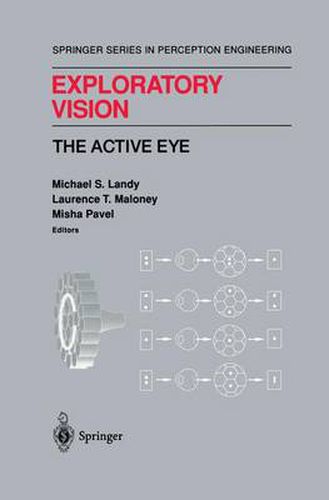Readings Newsletter
Become a Readings Member to make your shopping experience even easier.
Sign in or sign up for free!
You’re not far away from qualifying for FREE standard shipping within Australia
You’ve qualified for FREE standard shipping within Australia
The cart is loading…






This title is printed to order. This book may have been self-published. If so, we cannot guarantee the quality of the content. In the main most books will have gone through the editing process however some may not. We therefore suggest that you be aware of this before ordering this book. If in doubt check either the author or publisher’s details as we are unable to accept any returns unless they are faulty. Please contact us if you have any questions.
Advances in sensing, signal processing, and computer technology during the past half century have stimulated numerous attempts to design general-purpose ma chines that see. These attempts have met with at best modest success and more typically outright failure. The difficulties encountered in building working com puter vision systems based on state-of-the-art techniques came as a surprise. Perhaps the most frustrating aspect of the problem is that machine vision sys tems cannot deal with numerous visual tasks that humans perform rapidly and effortlessly. In reaction to this perceived discrepancy in performance, various researchers (notably Marr, 1982) suggested that the design of machine-vision systems should be based on principles drawn from the study of biological systems. This neuro morphic or anthropomorphic approach has proven fruitful: the use of pyramid (multiresolution) image representation methods in image compression is one ex ample of a successful application based on principles primarily derived from the study of biological vision systems. It is still the case, however, that the perfor of computer vision systems falls far short of that of the natural systems mance they are intended to mimic, suggesting that it is time to look even more closely at the remaining differences between artificial and biological vision systems.
$9.00 standard shipping within Australia
FREE standard shipping within Australia for orders over $100.00
Express & International shipping calculated at checkout
This title is printed to order. This book may have been self-published. If so, we cannot guarantee the quality of the content. In the main most books will have gone through the editing process however some may not. We therefore suggest that you be aware of this before ordering this book. If in doubt check either the author or publisher’s details as we are unable to accept any returns unless they are faulty. Please contact us if you have any questions.
Advances in sensing, signal processing, and computer technology during the past half century have stimulated numerous attempts to design general-purpose ma chines that see. These attempts have met with at best modest success and more typically outright failure. The difficulties encountered in building working com puter vision systems based on state-of-the-art techniques came as a surprise. Perhaps the most frustrating aspect of the problem is that machine vision sys tems cannot deal with numerous visual tasks that humans perform rapidly and effortlessly. In reaction to this perceived discrepancy in performance, various researchers (notably Marr, 1982) suggested that the design of machine-vision systems should be based on principles drawn from the study of biological systems. This neuro morphic or anthropomorphic approach has proven fruitful: the use of pyramid (multiresolution) image representation methods in image compression is one ex ample of a successful application based on principles primarily derived from the study of biological vision systems. It is still the case, however, that the perfor of computer vision systems falls far short of that of the natural systems mance they are intended to mimic, suggesting that it is time to look even more closely at the remaining differences between artificial and biological vision systems.